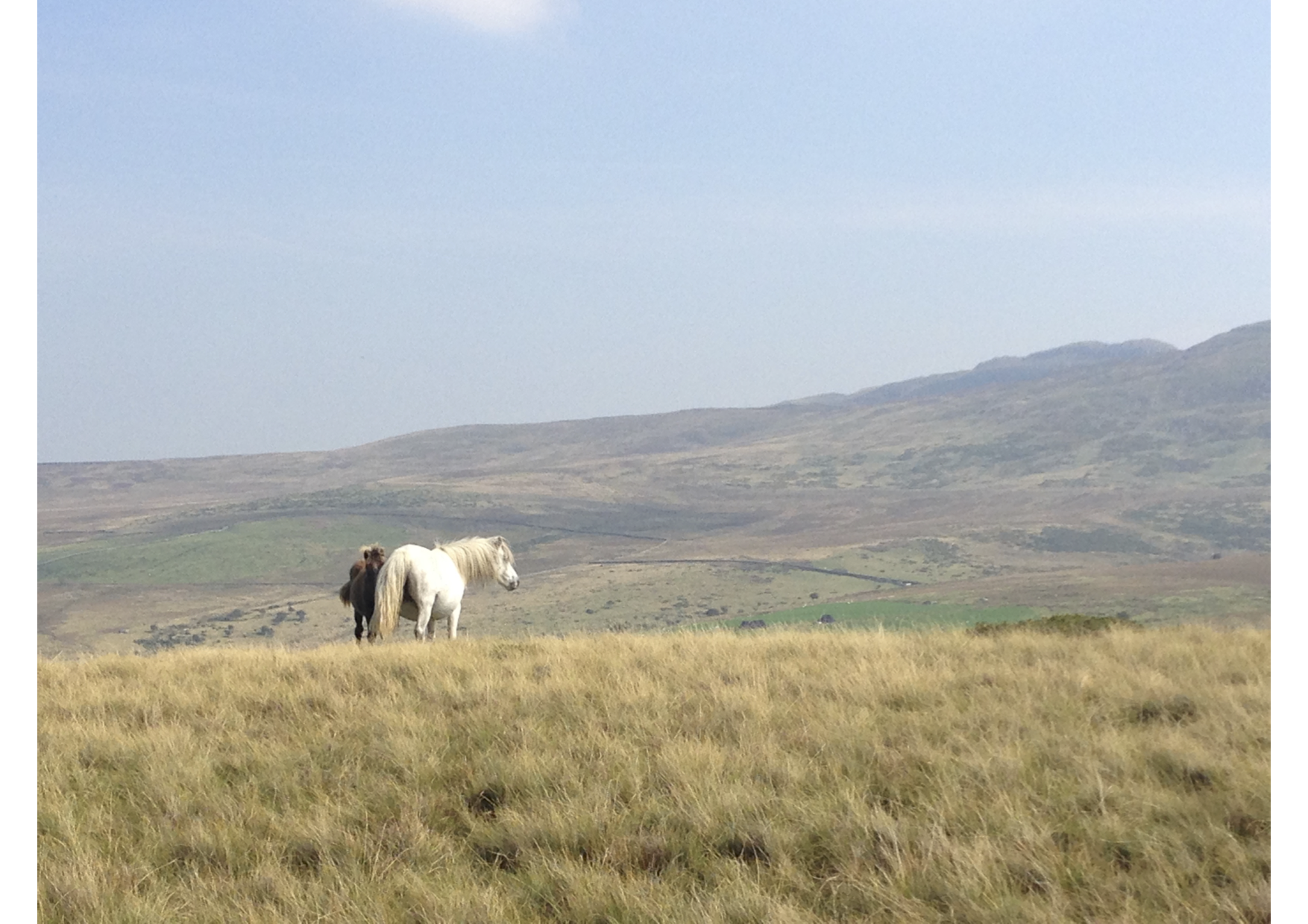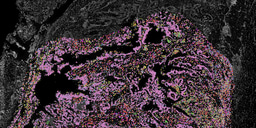Social networks - important for microbiome composition and academic success!
Published in Microbiology

This “Behind the Paper” piece is partly a reflection on the work that went into producing our article (“Gut microbiome composition is associated with spatial structuring and social interactions in semi-feral Welsh Mountain ponies”), and partly a reflection on becoming a new PI, which was my experience during the lifetime of this output. The samples for this paper were collected back in 2014 when I was in the final months of my PhD write up, as part of Jess Lea’s PhD project on equid population ecology, social networks and physiology. At time we had no idea that would be studying the microbiome from these samples a couple of years later. I’m a big fan of writing from home and in the summer of 2014, I’d hadn’t left the house, or in fact been out of my pyjamas, for quite a while, so I decided to join Jess Lea for some pony field work in Snowdonia National Park. It was a ridiculously windy day and it was just what I needed - I could barely hear myself think - welcome relief after months of internalised pontification about bacteria on the skin of frogs. I was also happy to be looking into the distance for a change, rather than at a screen 6 inches from my face. I joined Jess a few more times, collecting more samples and photographing ponies in the Carneddau, because I enjoyed being outdoors and doing something unrelated to my own work. The ponies are very lightly managed: they are rounded up once a year for a health check but are otherwise left to roam across the Aber and Llanfarifechan common that covers much of the Carneddau mountains in Snowdonia.

That October I completed my PhD and flew to South Africa to start a postdoctoral research fellowship at North-West University. Less than a year later, I was (somewhat unexpectedly) back in north-west England and starting a lectureship at the University of Salford. The application, interview and relocation back to the UK had all happened within a month, and after being shown to my office on my first day at Salford, the silence descended and I thought to myself, “ah cr*p, what now?!”. I had to develop my own research programmes, and critically, find my own funding. In these early months of my lectureship, the phrase “diversify or die” was constantly at the forefront of my mind. Between this and “publish or perish”, there was hardly a moments peace! Although the field of amphibian skin microbiomes has been attracting a lot of attention for their role in protecting hosts from the highly infectious Batrachochytrium fungal pathogens, funding streams in the UK for this area are somewhat limited. In the fields of ecology and conservation, mammals by and large, receive greater attention. I was lucky to be back down the road from my alma mater, and my existing network provided a shoe-in to build a track record in an area outside frogs. Although we were friends, Susanne Shultz and I had not worked together before, and these samples were a good opportunity to bring together our seemingly disparate fields of microbial ecology (me) and evolutionary biology (Susanne). Relationships between social networks or population structure and microbiomes seemed conceptually possible, but the project was a bit of a leap into the unknown for both of us. Luckily, I had also been gifted a superb Masters student, Bryony Unwin, which made the whole process a lot easier.

In this paper, we show that microbiome composition is structured at multiple levels within populations of social mammals and thus, may form a unit on which natural selection can act. We also show that particular social interactions (i.e. mother-offspring, and stallion-mare) lead to convergence in microbiome composition. I’m sure there’s some parallels to be drawn here about social networks of wild ponies and social networks of academics, although I’m not sure if anyone is working on the converging microbiomes of collaborating scientists! Academia is structured at multiple levels, it is a highly competitive environment, and it can be particularly difficult for women. Being successful is hard, but solid social networks are key. I am lucky to have old comrades just down the road, although I’m alright with our microbiomes not converging!
The full paper can be accessed at: go.nature.com/2zFIOJ1
Follow the Topic
-
Microbiome

This journal hopes to integrate researchers with common scientific objectives across a broad cross-section of sub-disciplines within microbial ecology. It covers studies of microbiomes colonizing humans, animals, plants or the environment, both built and natural or manipulated, as in agriculture.
Related Collections
With Collections, you can get published faster and increase your visibility.
Harnessing plant microbiomes to improve performance and mechanistic understanding
This is a Cross-Journal Collection with Microbiome, Environmental Microbiome, npj Science of Plants, and npj Biofilms and Microbiomes. Please click here to see the collection page for npj Science of Plants and npj Biofilms and Microbiomes.
Modern agriculture needs to sustainably increase crop productivity while preserving ecosystem health. As soil degradation, climate variability, and diminishing input efficiency continue to threaten agricultural outputs, there is a pressing need to enhance plant performance through ecologically-sound strategies. In this context, plant-associated microbiomes represent a powerful, yet underexploited, resource to improve plant vigor, nutrient acquisition, stress resilience, and overall productivity.
The plant microbiome—comprising bacteria, fungi, and other microorganisms inhabiting the rhizosphere, endosphere, and phyllosphere—plays a fundamental role in shaping plant physiology and development. Increasing evidence demonstrates that beneficial microbes mediate key processes such as nutrient solubilization and uptake, hormonal regulation, photosynthetic efficiency, and systemic resistance to (a)biotic stresses. However, to fully harness these capabilities, a mechanistic understanding of the molecular dialogues and functional traits underpinning plant-microbe interactions is essential.
Recent advances in multi-omics technologies, synthetic biology, and high-throughput functional screening have accelerated our ability to dissect these interactions at molecular, cellular, and system levels. Yet, significant challenges remain in translating these mechanistic insights into robust microbiome-based applications for agriculture. Core knowledge gaps include identifying microbial functions that are conserved across environments and hosts, understanding the signaling networks and metabolic exchanges between partners, and predicting microbiome assembly and stability under field conditions.
This Research Topic welcomes Original Research, Reviews, Perspectives, and Meta-analyses that delve into the functional and mechanistic basis of plant-microbiome interactions. We are particularly interested in contributions that integrate molecular microbiology, systems biology, plant physiology, and computational modeling to unravel the mechanisms by which microbial communities enhance plant performance and/or mechanisms employed by plant hosts to assemble beneficial microbiomes. Studies ranging from controlled experimental systems to applied field trials are encouraged, especially those aiming to bridge the gap between fundamental understanding and translational outcomes such as microbial consortia, engineered strains, or microbiome-informed management practices.
Ultimately, this collection aims to advance our ability to rationally design and apply microbiome-based strategies by deepening our mechanistic insight into how plants select beneficial microbiomes and in turn how microbes shape plant health and productivity.
This collection is open for submissions from all authors on the condition that the manuscript falls within both the scope of the collection and the journal it is submitted to.
All submissions in this collection undergo the relevant journal’s standard peer review process. Similarly, all manuscripts authored by a Guest Editor(s) will be handled by the Editor-in-Chief of the relevant journal. As an open access publication, participating journals levy an article processing fee (Microbiome, Environmental Microbiome). We recognize that many key stakeholders may not have access to such resources and are committed to supporting participation in this issue wherever resources are a barrier. For more information about what support may be available, please visit OA funding and support, or email OAfundingpolicy@springernature.com or the Editor-in-Chief of the journal where the article is being submitted.
Collection policies for Microbiome and Environmental Microbiome:
Please refer to this page. Please only submit to one journal, but note authors have the option to transfer to another participating journal following the editors’ recommendation.
Collection policies for npj Science of Plants and npj Biofilms and Microbiomes:
Please refer to npj's Collection policies page for full details.
Publishing Model: Open Access
Deadline: Jun 01, 2026
Microbiome and Reproductive Health
Microbiome is calling for submissions to our Collection on Microbiome and Reproductive Health.
Our understanding of the intricate relationship between the microbiome and reproductive health holds profound translational implications for fertility, pregnancy, and reproductive disorders. To truly advance this field, it is essential to move beyond descriptive and associative studies and focus on mechanistic research that uncovers the functional underpinnings of the host–microbiome interface. Such studies can reveal how microbial communities influence reproductive physiology, including hormonal regulation, immune responses, and overall reproductive health.
Recent advances have highlighted the role of specific bacterial populations in both male and female fertility, as well as their impact on pregnancy outcomes. For example, the vaginal microbiome has been linked to preterm birth, while emerging evidence suggests that gut microbiota may modulate reproductive hormone levels. These insights underscore the need for research that explores how and why these microbial influences occur.
Looking ahead, the potential for breakthroughs is immense. Mechanistic studies have the power to drive the development of microbiome-based therapies that address infertility, improve pregnancy outcomes, and reduce the risk of reproductive diseases. Incorporating microbiome analysis into reproductive health assessments could transform clinical practice and, by deepening our understanding of host–microbiome mechanisms, lay the groundwork for personalized medicine in gynecology and obstetrics.
We invite researchers to contribute to this Special Collection on Microbiome and Reproductive Health. Submissions should emphasize functional and mechanistic insights into the host–microbiome relationship. Topics of interest include, but are not limited to:
- Microbiome and infertility
- Vaginal microbiome and pregnancy outcomes
- Gut microbiota and reproductive hormones
- Microbial influences on menstrual health
- Live biotherapeutics and reproductive health interventions
- Microbiome alterations as drivers of reproductive disorders
- Environmental factors shaping the microbiome
- Intergenerational microbiome transmission
This Collection supports and amplifies research related to SDG 3, Good Health and Well-Being.
All submissions in this collection undergo the journal’s standard peer review process. As an open access publication, this journal levies an article processing fee (details here). We recognize that many key stakeholders may not have access to such resources and are committed to supporting participation in this issue wherever resources are a barrier. For more information about what support may be available, please visit OA funding and support, or email OAfundingpolicy@springernature.com or the Editor-in-Chief.
Publishing Model: Open Access
Deadline: Jun 16, 2026




Please sign in or register for FREE
If you are a registered user on Research Communities by Springer Nature, please sign in